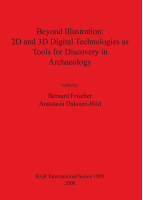Description
BOOK DESCRIPTIONThis book is timely. As the contributions in it illustrate, 2D and 3D modeling of cultural heritage is no longer used just to illustrate the location and appearance (past or present) of archaeological sites, but also as a tool to discover and recover data from archaeological remains. There are better ways of predicting where this data might be found under the surface. When applied to the legacy excavation data of a cultural heritage siteor when used to record the progress of a new excavation, 3D modeling has the potential to mitigate the irreversible and destructive nature of archaeological excavation, an unfortunate, ironic, and unavoidable central fact of archaeology as traditionally practiced. With the widespread adoption of 3D technologies to recordand reconstruct archaeological sites, the archaeologist can virtually preserve the site through 3D data capture as we dig it up. And, once the 3D data gathered in the field has been modeled, it is possible to retrace decisions and test the validity of conclusions with more precision and confidence. Contents: From digital illustration to digital heuristics (Bernard Frischer); Envisioning explanation: the art in science (David C. Gooding); Virtual archaeology: communication in 3D and ecological thinking (Maurizio Forte); Reasoning in 3D: a critical appraisal of the role of 3D modelling and virtual reconstructions in archaeology (Sorin Hermon); Exploring behavioural terra incognita with archaeological agent-based models (Luke S. Premo); Cost surface DEM modeling of Viking Age seafaring in the Baltic Sea (George Indruszewski and C. Michael Barton); Visualizing DEMs: the significance of modern landscape modifications in the distribution of archaeological finds (Renate Gerlach, Irmela Herzog and Julia von Koblinski); The potential of ancient maps for quantifying slope processes - Comparison of historical and modern elevation models (Jutta Lechterbeck); LIDAR-based surface height measurements: applications in archaeology (Arjan G. de Boer, Walter N. H. Laan, Wouter Waldus and Wilko K. van Zijverden); Voxel-based 3D GIS: modelling and analysis of archaeological stratigraphy (Undine Lieberwirth); A software system to work with 3D models in cultural heritage research (Can Ozmen and Selim Balcisoy); A digital model of the Inca Sanctuary of the Sun (Chris Johanson and Bernard Frischer); Applications of 3D technology as a research tool in archaeological ceramic analysis (Avshalom Karasik); Virtual archaeology and computer-aided reconstruction of the Severan Marble Plan (David R. Koller).











